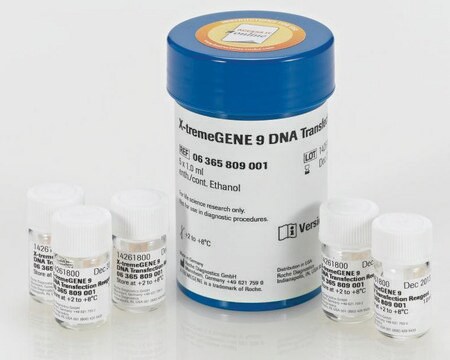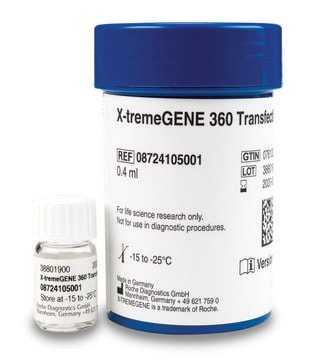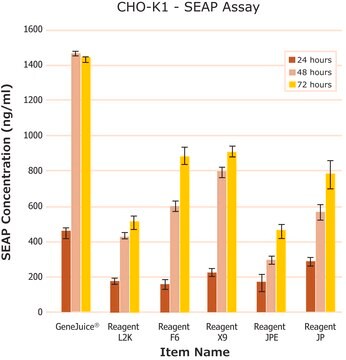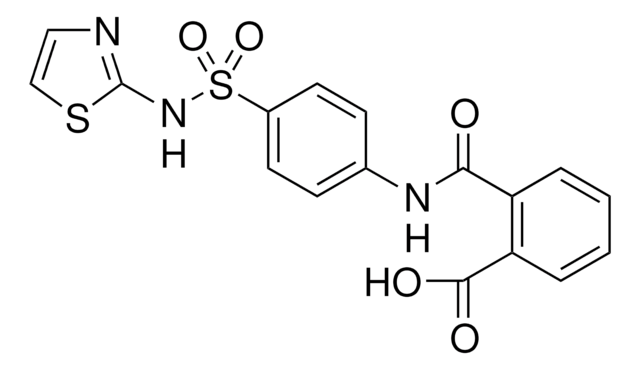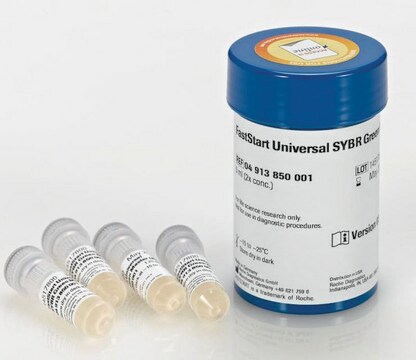XTGHP-RO
Roche
X-tremeGENE™ HP DNA Transfection Reagent
High-performance polymer reagent for transfecting many cell lines
About This Item
Recommended Products
grade
for molecular biology
Quality Level
form
liquid (aqueous solution)
usage
mL (suitable for 165 transfections)
packaging
pkg of 0.4 mL (06366244001)
pkg of 1.0 mL (06366236001)
pkg of 5 × 1 mL (06366546001)
manufacturer/tradename
Roche
technique(s)
transfection: suitable
storage temp.
−20°C
General description
Features and Benefits
- Benefit from an easy-to-use non-liposomal reagent that is free of animal-derived components, stable at room temperature, filtered through 0.2 μm pore size membrane, and active in serum-containing medium.
- Achieve new levels of transfection efficiency in primary cells and tumor cell lines that are not transfected well by other reagents.
- Generate physiologically relevant data using a reagent with low cytotoxic effects.
- Increase experimental throughput and enable target evaluation using a simple and consistent protocol.
Quality
Physical form
Other Notes
Legal Information
signalword
Danger
hcodes
Hazard Classifications
Eye Irrit. 2 - Flam. Liq. 2
Storage Class
3 - Flammable liquids
wgk_germany
WGK 1
flash_point_f
334.4 °F
flash_point_c
168 °C
Certificates of Analysis (COA)
Search for Certificates of Analysis (COA) by entering the products Lot/Batch Number. Lot and Batch Numbers can be found on a product’s label following the words ‘Lot’ or ‘Batch’.
Already Own This Product?
Find documentation for the products that you have recently purchased in the Document Library.
Customers Also Viewed
Articles
Automation is used for many applications to reduce variation caused by manual handling and to obtain reproducible results in high-throughput assays. High-throughput applications, such as knockdown studies or target screenings, often include cell transfection.
Small inhibitory RNAs (siRNAs) have become the focus of interest in many laboratories. For the first time, these molecules offer an easy way to knock down the expression of selected genes in mammalian cells without having to resort to classical gene knockout techniques.
Transfection is the introduction of DNA, RNA, or proteins into eukaryotic cells and is used in research to study and modulate gene expression. Thus, transfection techniques and protocols serve as an analytical tool that facilitates the characterization of genetic functions, protein synthesis, cell growth and development.
This brief webinar provides an overview of what transfection is and the methods that are used to introduce DNA or RNA into eukaryotic cells.
Protocols
Lentiviruses represent a powerful tool in research applications to transduce a wide range of cell types.
Transient co-transfection of plasmids is a method that is commonly employed for cellular protein-protein interaction studies, transcription factor studies, and gene knockdown studies using shRNA encoding plasmids.
Cell preparation for transfection Plate cells approx. 24 hours before transfection making sure cells are at optimal concentration (70 – 90 % confluency).
Protocols for Transfecting Common Cell Lines with X-tremeGENE™ Transfection Reagents
Related Content
Browse our convenient transfection reagent selection guide to match the best reagent for your specific cell line and application needs.
Our team of scientists has experience in all areas of research including Life Science, Material Science, Chemical Synthesis, Chromatography, Analytical and many others.
Contact Technical Service
